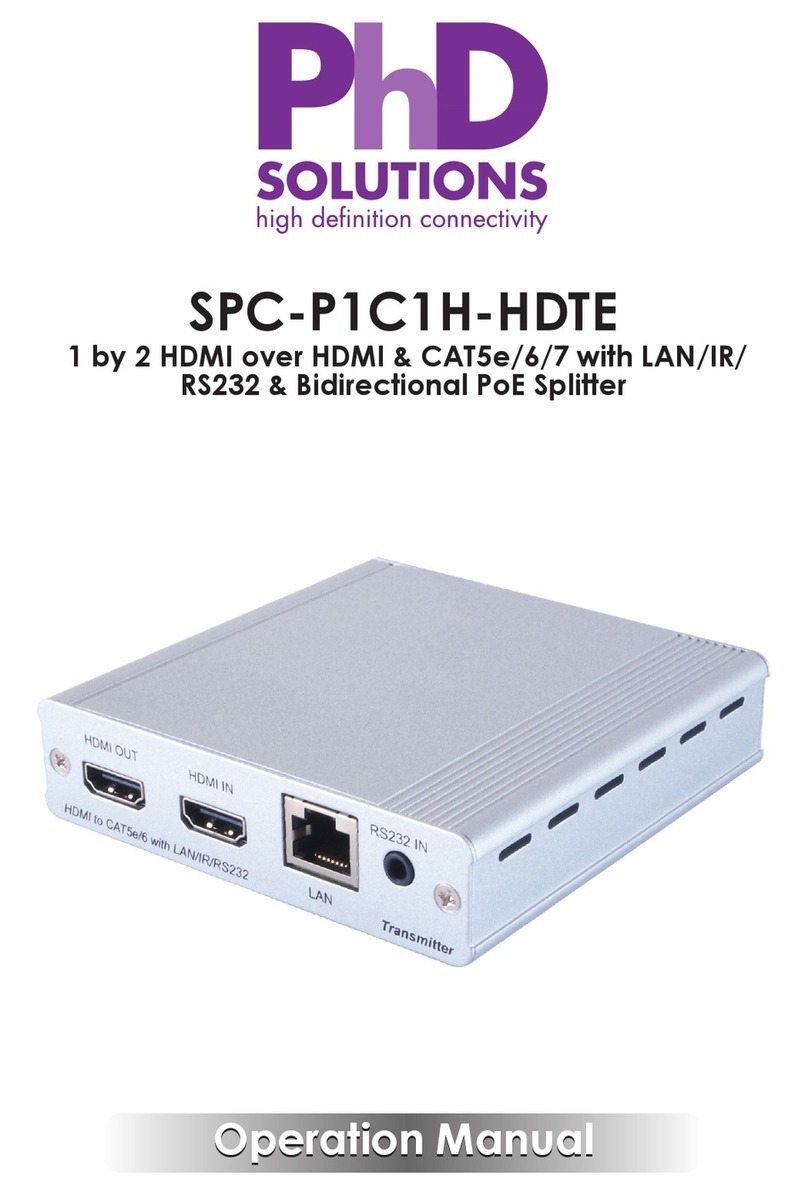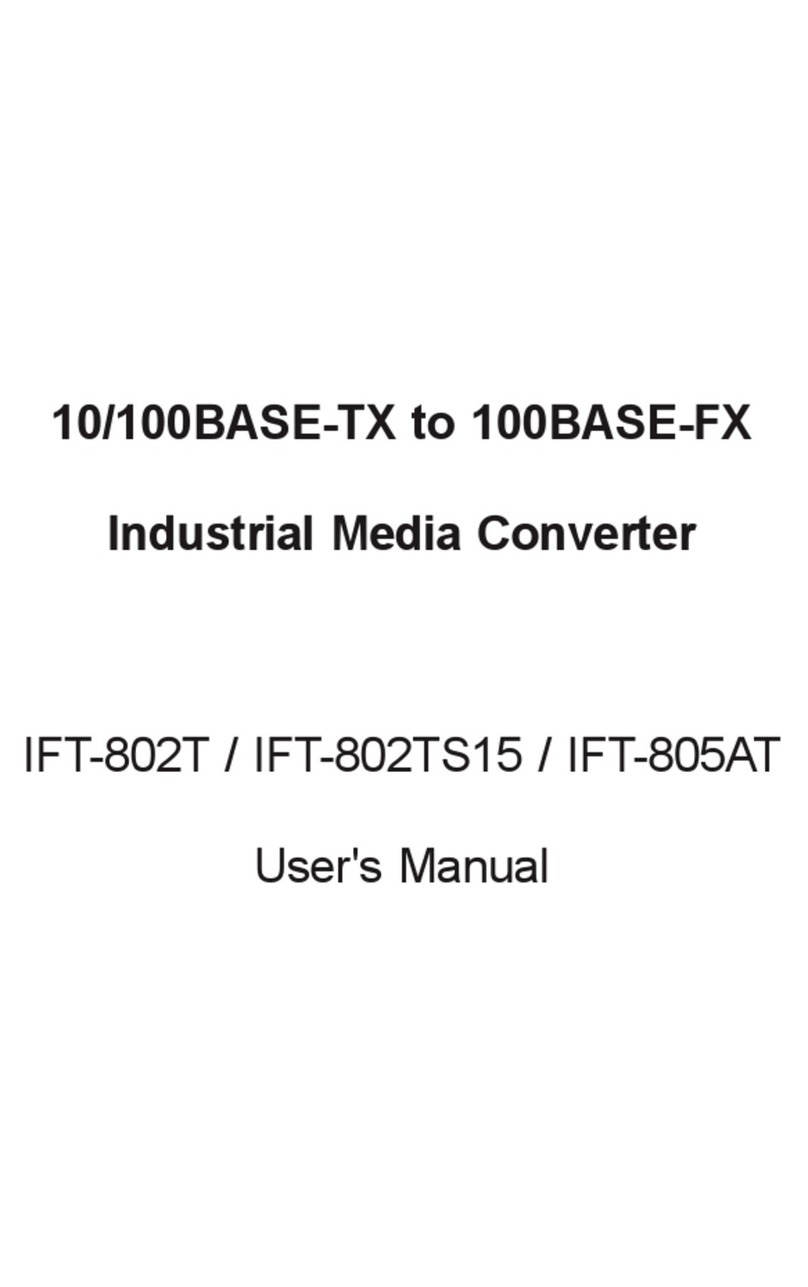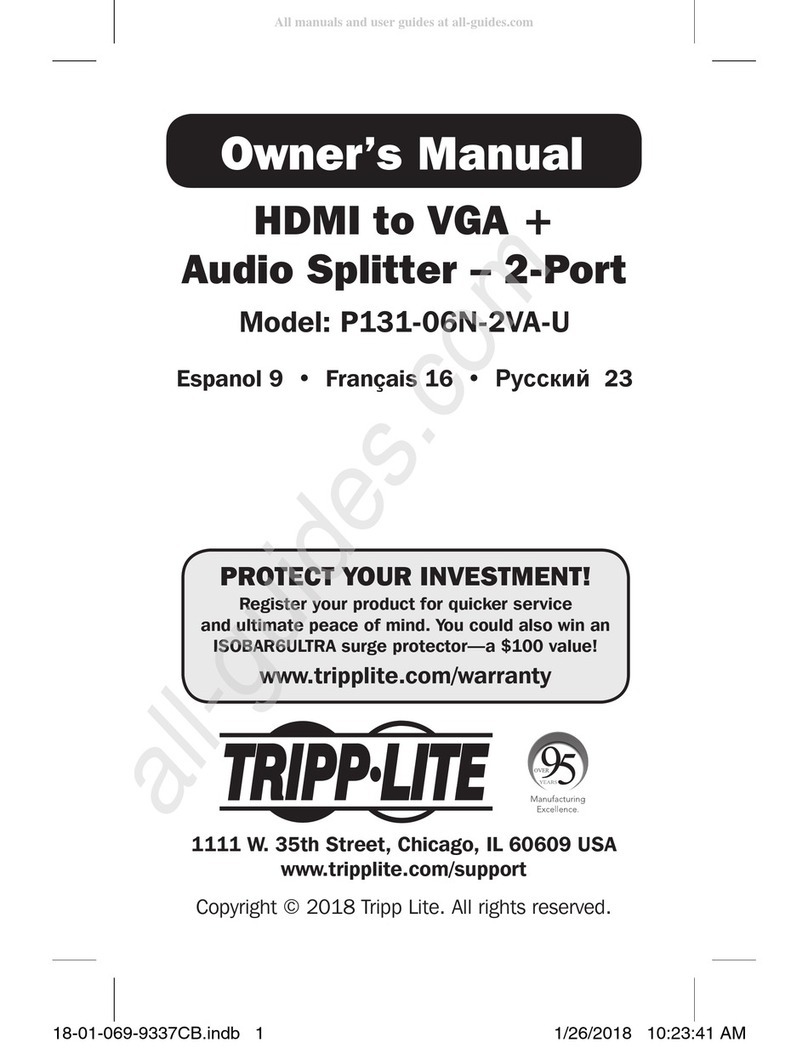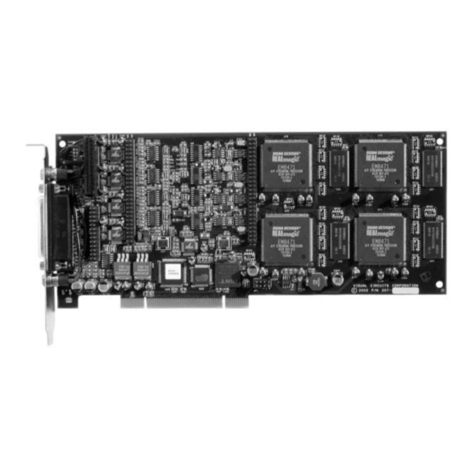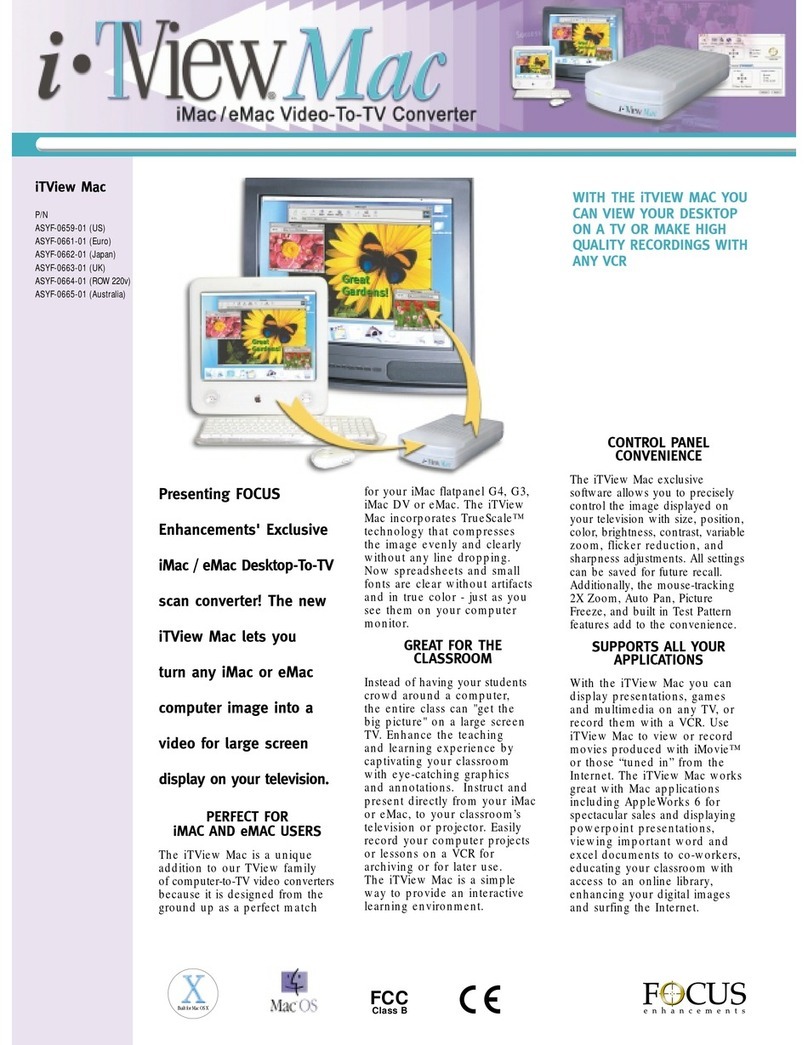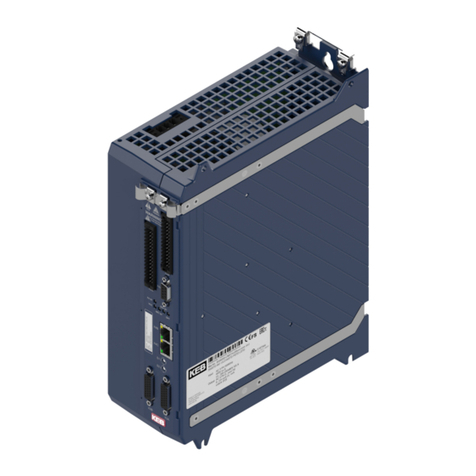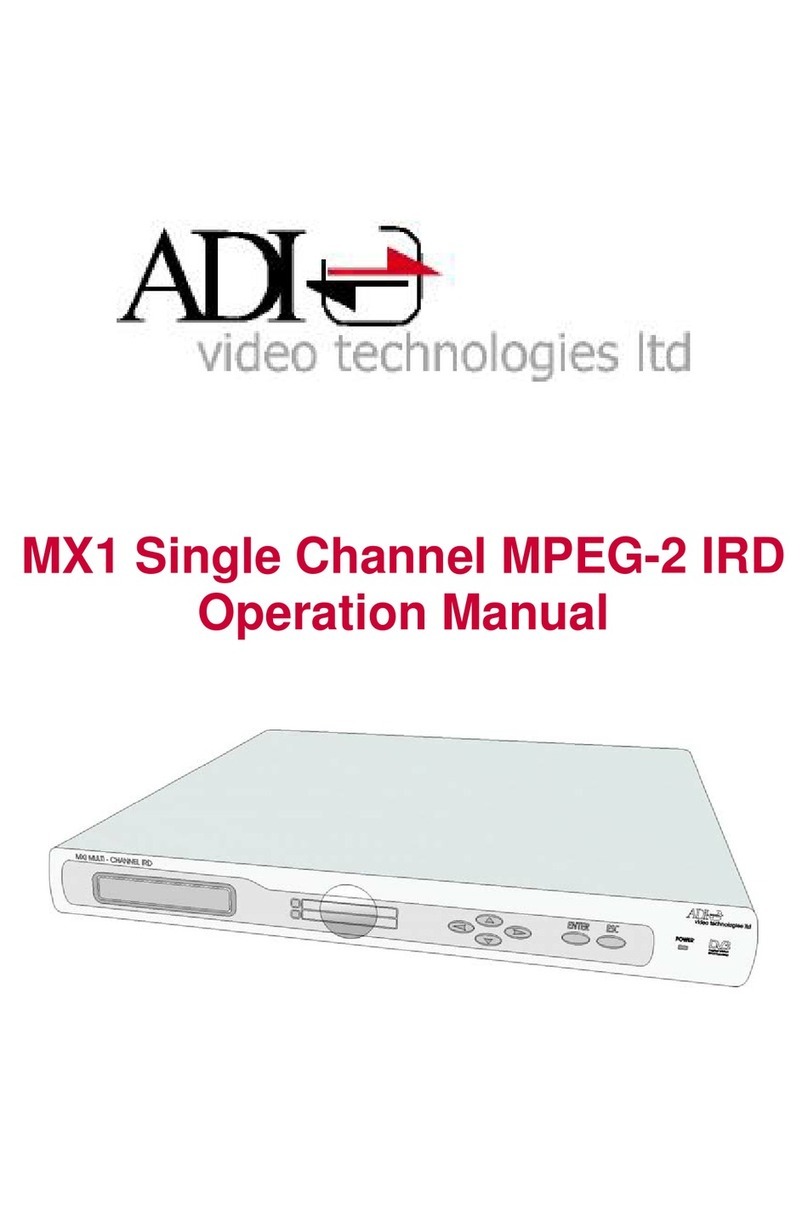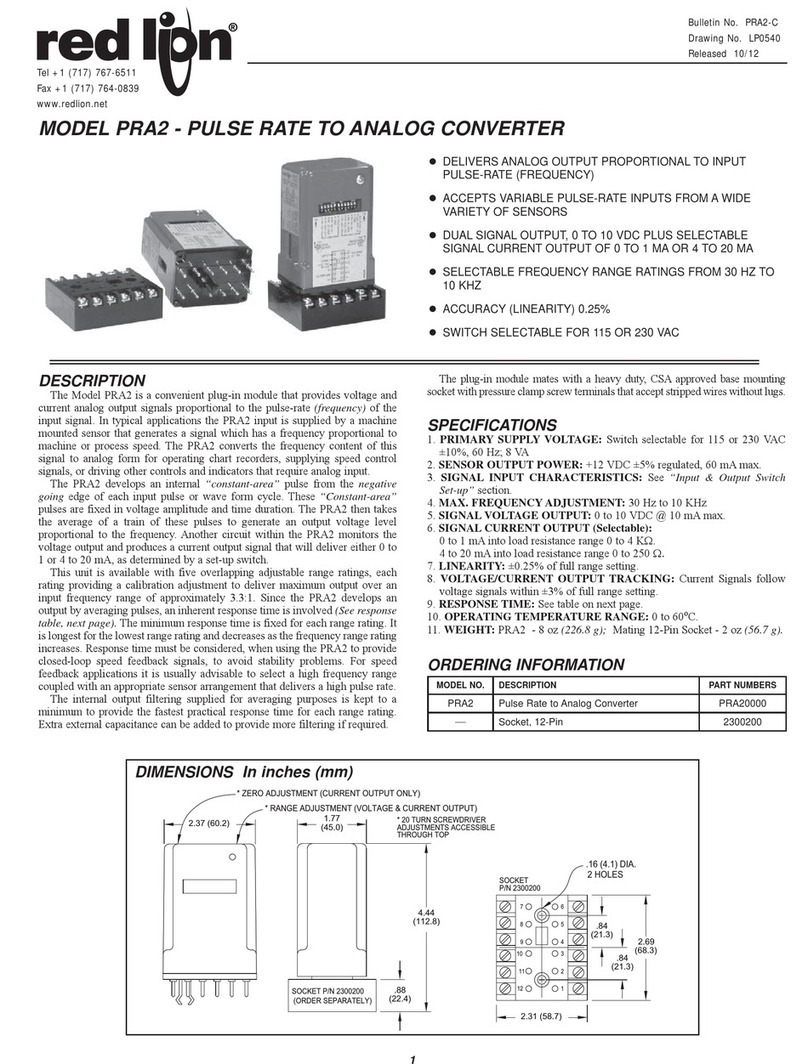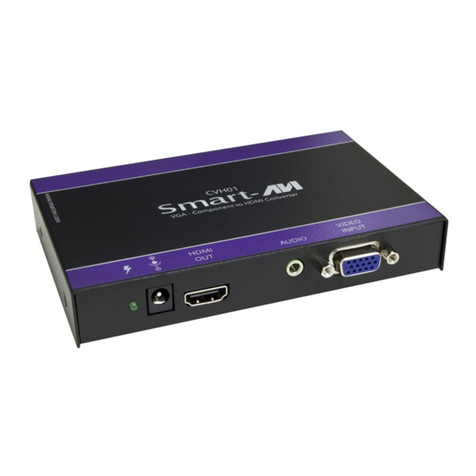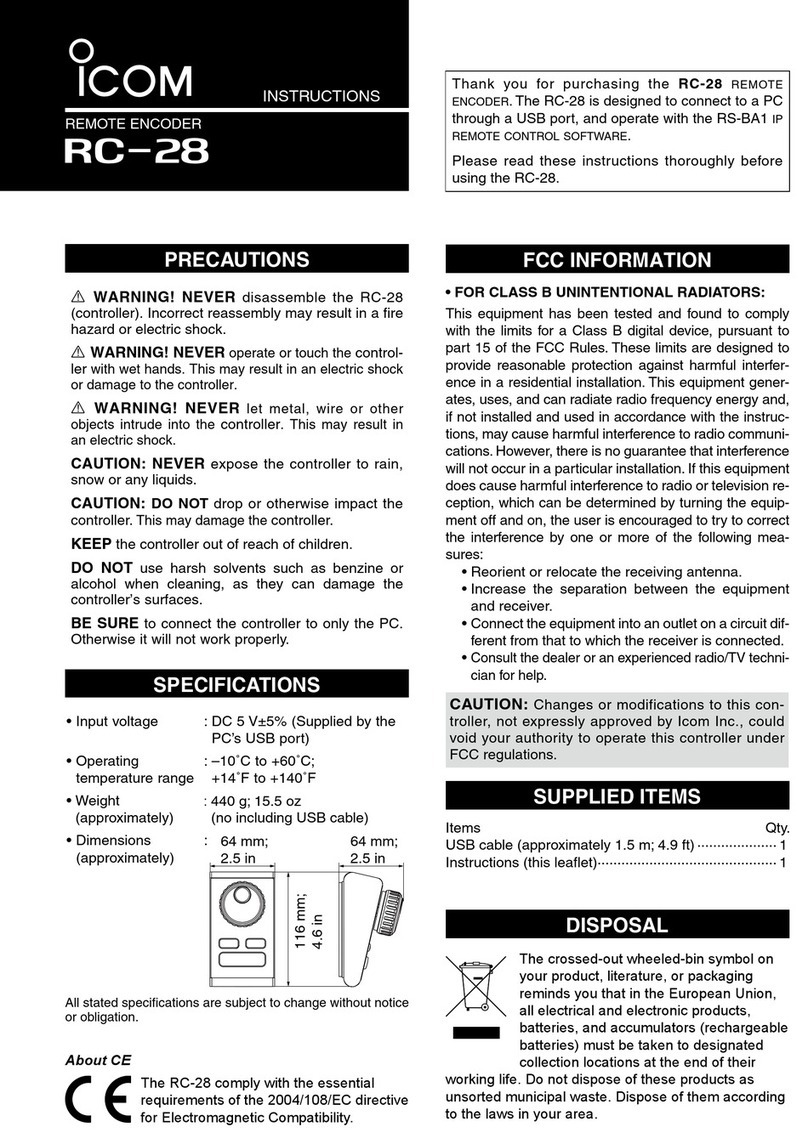Intelligent network solutions DNP-R-2F-K User manual

Intelligent Network Solutions
DNP-R-2F/FC-K
Passive Dual Port Optic Fibre/RS485 Medium Converter
User Manual
*Man-1572*
Man-1572
DNP-R-2F/FC-K
Rev.01

Legal information
The contents of this document are provided “as is”, except as required by applicable law, no
warranties of any kind, either express or implied, including, but not limited to, the implied
warranties of merchantability and fitness for a particular purpose, are made in relation to the
accuracy and reliability or contents of this document. Kentec reserves the right to revise this
document or withdraw it at any time without prior notice.
Under no circumstances shall Kentec be responsible for any loss of data or income or any
special, incidental, and consequential or indirect damages howsoever caused.
More information about Kentec can be found at the following Internet address:
http://www.kentec.co.uk
2Man-1572
DNP-R-2F/FC-K

3
Man-1572
DNP-R-2F/FC-K
Safety
Prior to installation:
Read this manual completely and gather all information on the unit.
Ensure that your application does not exceed the safe operating specifications for this
unit.
This unit should only be installed by qualified personnel.
This unit should be built into an apparatus cabinet, or similar, where access is
restricted to service personnel only.
The power supply wiring must be sufficiently fused, and if necessary, it must be
possible to disconnect manually from the power supply. Ensure compliance to national
installation regulations.
This unit uses convection cooling. Avoid obstructing the airflow around the unit.
Before mounting, using or removing this unit:
Prevent access to hazardous voltages by disconnecting the unit from the power supply.
Warning! Do not open a connected unit. Hazardous voltages may occur within this unit
when connected to a power supply.
Care recommendations
Follow the care recommendations below to maintain full operation of the unit and to
fulfil the warranty obligations.
This unit must not be operated with the cover removed.
Do not attempt to disassemble the unit. There are no user serviceable parts inside.
Do not drop, knock or shake the unit. Rough handling beyond the specification may
cause damage to internal circuit boards.
Do not use harsh chemicals, cleaning solvents or strong detergents to clean the unit.
Do not paint the unit. Paint can clog the unit and prevent proper operation.
Do not expose the unit to any kind of liquids (rain, beverages etc). The unit is not
waterproof. Keep the unit within the specified humidity levels.
Do not use or store the unit in dusty, dirty areas. Connectors as well as other
mechanical parts may be damaged.
If the unit is not working properly, contact the place of purchase, nearest Kentec
distributor office, or Kentec Tech support.
Maintenance
No maintenance is required, as long as the unit is used as intended within the specified
conditions.

4
Man-1572
DNP-R-2F/FC-K
Agency approvals and standards compliance
Type
Approval / Compliance
EMC
EN 61000-6-2, Immunity Standard (Industrial Environments)
EN 61000-6-4, Emission Standard (Industrial Environments)
Safety
EN 60950, IT Equipment
Table 1
Ratings
Power
18 to 36V (24V DC nominal); 170mA (at 24V)
Temperature (Operating)
-10 to 70°C
Temperature (Storage)
-40 to 70°C
Ingress protection (IP)
IP20
Table 2

5
Man-1572
DNP-R-2F/FC-K
Safety Control Drawing
Position
Description
Input / Output values
1
RX –LC connector interface for fibre - PORT B
Data rate: 100 Mb/s –125 MBd.
Fibre drive distance:
M: Multi-mode - up to 2km
S: Single-mode –10 / 15 / 20 /
40 / 80km variants
M: 850nm / 1310nm
S: 1310 / 1550nm
BiDi: 1310 & 1550nm
2
TX –LC connector interface for fibre - PORT B
3
RX –LC connector interface for fibre - PORT C
4
TX –LC connector interface for fibre - PORT C
5
Screen/Shield RS-485 - PORT B or C
Umax = ± 5Vpk
Imax = ± 60 mA
Data rate:
4.8 to 115.2 kbit/s
6
In / Out / + line RS-485 - PORT B or C
7
In / Out / - line RS-485 - PORT B or C
8
Screen/Shield RS-485 - PORT A1 (Panel IN Port)
9
In / Out / + line RS-485 - PORT A1 (Panel IN Port)
10
In / Out / - line RS-485 - PORT A1 (Panel IN Port)
11
Screen/Shield RS-485 - PORT A2 (Panel OUT Port)
12
In / Out / + line RS-485 - PORT A2 (Panel OUT Port)
13
In / Out / - line RS-485 - PORT A2 (Panel OUT Port)
Table 3
DNP R-2F Configuration DNP R-2FC Configuration
Figure 1
Table 4
Position
Description
Input / Output values
1
In / +Voltage A
Uin = (18 –36): 24 VDC Nominal
Iin = 210 mA Rated at 24 VDC
2
In / Common
3
In / +Voltage B
4
In / Common
5
Earth connection
6
In & out / Relay contact (C - Common)
Uin = 30 VDC max
Iin = 2000 mA max, Pin = 60 W max
7
In & out / Relay contact (NC - Normally Closed)
8
In / Out / - line RS-485 –IO Interface
Umax = ± 5Vpk
Imax = ± 60 mA
Data rate:
4.8 to 115.2 kbit/s
9
In / Out / + line RS-485 –IO Interface
10
Screen/Shield RS-485 –IO Interface

6
Man-1572
DNP-R-2F/FC-K
Functional description
The DNP R-2F/FC are network nodes that support intelligent infrastructure monitoring
of the hybrid and Optic Fibre network bus with RS-485 CIE interface ports A1 and A2.
Figure 2: Design Structure Diagram
The DNP R-2F/FC functions as a PASSIVE dual port Optic Fibre / RS-485 medium
converter.
The DNP R-2F/FC can operate in a mode with two optic fibre interfaces (2F) located on
ports B and C and also in a mode with a single optic fibre interface and an RS-485
interface (FC or CF).
In hybrid mode (FC /CF) the optic fibre interface on the DNP R-2F/FC can be
configured as either port B or C by selecting the correct rotary switch setting as per
Table 10. When used to support an optic fibre link in a class A bus configuration, one
of the
DNP R-2FC modules would require a port swap to support the standard port B to C
connection format around the closed ring. An example of this is illustrated in Figure
10b.

7
Man-1572
DNP-R-2F/FC-K
When using as a 2F module, the two Optic Fibre ports (B & C) are connected as per
Figure 10a.
Depending on the driver module selected, the Optic Fibre, transceiver modules can
support transmission distances up to 80 km. The CIE connection to port A1 and/or A2
is via an RS-485 interface. The connection to ports A1, A2, B and C are as indicated in
Figures 10a and 10b, depending on the mode of operation.
The module supports 2-wire half duplex communication from CIE nodes
(RS-485). The INS modules are transparent to the CIE protocols, only routing and
analysing the data structure but not the content. The maximum standard transmission
rate supported on the CIE ports (A1 and A2) is 115.2 kbit/s for RS-485. (Higher
transmission rates are possible with OEM support).

8
Man-1572
DNP-R-2F/FC-K
Interface specifications
Power
Rated voltage
18 to 36 VDC
Operating voltage
17 to 42 VDC
Rated current
170 mA @ 24 VDC
Rated frequency
DC
Polarity
Reverse polarity protection
Connection
Detachable screw terminal
Connection size
0.2 –2.5 mm2 (AWG 24-12)
Table 5
RS485 Port A1, A2 & B/C - DNX R-2FC
Electrical specification
RS-485 / ARCNET
Data rate
4.8 kbit/s –312 kbit/s (as per selection in table)
Data format
7 or 8 Data bits; Odd, Even or None parity; 1 or 2 Stop bits (RS-485)
Connection
Detachable screw terminal
Connector size
0.2 –2.5 mm2 (AWG 24-12)
Transmission range
In accordance with EIA RS-485
≤ 1200 m, depending on data rate and cable type
RS-485 Termination settings
IN/OUT Switchable termination (Manual via DIP switch 2)
RS-485 Failsafe setting
Failsafe biasing 820 Ω
Protection
Installation Fault Tolerant (up to ± 44 V)
Table 6
Optic Fibre Port B & C
Electrical specification
LC Type - Optic Fibre connectors
Data rate
100 Mb/s –125 MBd.
(as per selection in table)
Data format
Proprietary format
Connection
LC Type - Optic Fibre connectors
Connector description
LC type –push-pull latching mechanism
Fibre cable type
3.0mm jacketed or 900µm buffered
Transmission range
Multi-mode –M: 1 to 2 km, Single-mode –S: 1 to 15km,
Single-mode - L: 1 to 40 km, depending on losses due to in-line connectors,
splices and optical switches
Table 7
USB (Not used in DNP R-2F/FC)
Electrical specification
USB version 2.0
Data rate
Full speed device mode as per USB 2.0 specification
Data format
As per USB specification
Connector type
USB micro B (device) - cable type micro B required
Implementation mode
Slave
Protection
Transient voltage protection
Table 8

9
Man-1572
DNP-R-2F/FC-K
Locations of Interface ports, LEDs and DIP-switches
LED Indicators
LED
Status
Colour
Description
Q &S LED C1/
Q &S LED B1
LEDs are used to indicate the Router Mode State
Q &S LED C2/
Q &S LED B2
Q &S LED C3/
Q &S LED B3
Port B TX
ON
Green
A good data packet has been transmitted out of port B
OFF
No valid data has been transmitted out of port B
Port B RX
ON
Green
A good data packet has been received on port B
OFF
No valid data has been received on port B
TERM B
Port B side of
Link established
ON
Green
In mode 2: Port B has successfully established and validated
healthy communication across the link to a remote port C terminal.
OFF
In mode 2: Port B has failed to successfully establish and validate
healthy communication across the link to a remote port C terminal.
Port C TX
ON
Green
A good data packet has been transmitted out of port C
OFF
No valid data has been transmitted out of port C
Port C RX
ON
Green
A good data packet has been received on port C
OFF
No valid data has been received on port C
TERM C
Port C side of
Link established
ON
Green
In mode 2: Port C has successfully established and validated
healthy communication across the link to a remote port B terminal.
OFF
In mode 2: Port C has failed to successfully establish and validate
healthy communication across the link to a remote port B terminal.
Port A TX
ON
Green
A good data packet has been transmitted out of port A1 or A2
OFF
No valid data has been transmitted out of port A1 or A2
Port A RX
ON
Green
A good data packet has been received on port A1 or A2
OFF
No valid data has been received on port A1 or A2
Status port B
ON
Green
The link connected to port B is HEALTHY with data activity.
Amber
There is a FAULT present on the link connected to port B.
OFF
There is NO fault on port B, but INSUFFICIENT DATA activity.
FLASH
Amber
There is a signal QUALITY FAULT present on the link connected
to port B.
Green
Port B is in a state of establishing the link
Status port C
ON
Green
The link connected to port C is HEALTHY with data activity.
Amber
There is a FAULT present on the link connected to port C.
OFF
There is NO fault on port C, but INSUFFICIENT DATA activity.
FLASH
Amber
There is a signal QUALITY FAULT present on the link connected
to port C.
Green
Port C is in a state of establishing the link

10
Man-1572
DNP-R-2F/FC-K
Power supply 1
ON
Green
Power supply 1 is HEALTHY
OFF
CPLD has failed [OR] if Fault LED is Flashing PSU1 has failed
FLASH
CPLD Heartbeat
Power supply 2
ON
Green
Power supply is HEALTHY
OFF
Table 9
Figure 3: Node Display
SFP signing
All of the supplied SFP transceivers are signed to mark calibration with the
DNP R-2F/FC product and any non-signed transceivers must NOT be used with the
DNP R-2F/FC.
Any use of SFP transceivers with the product will void the warranty on the
product as it will affect the operation of the product.

11
Man-1572
DNP-R-2F/FC-K
DIP-switch settings
Before accessing the internal DIP-switch and jumper settings:
Prevent damage to internal electronics from electrostatic discharges (ESD) by
discharging your body to a grounding point (e.g. use of a wrist strap). For internal DIP
SWITCH setting information, refer to the DNP R-2F/FC Advanced User Manual.
The configuration setting for use with Kentec fire alarm panels has been simplified so
that you only need to set Rotary switch (Rot SW 1) for the DNP R-2F/FC, (refer to
Figure 4) which is externally accessible. You should therefore not need to open the
product enclosure. The settings as presented in Tables 10.
All modems are shipped with the 120 Ohm termination jumpers (120Ω JMP) inserted to
introduce a standard 120 Ohm termination on the RS-485 ports.
Note* The Kentec Fire Alarm Panels require the 120 Ohm jumpers to be inserted.
Figure 4: Rotary switch
ROT
SW 1
120Ω
JMP

12
Man-1572
DNP-R-2F/FC-K
Switch settings for DNP R-2F/FC operation
Rotary selector switch settings for communication configuration
The rotary selector switch, located on the DNP R-2F/FC as shown in Figure 5, has the
setting associations shown in Table 10.
Figure 5: Rotary selector
Rot Switch Setting
Position
Function
Panel
0
Port B - Fibre
Port C - Fibre
Taktis
1
Port B –RS-485
Port C - Fibre
Taktis
2
Port B - Fibre
Port C –RS-485
Taktis
3
Port B - Fibre
Port C - Fibre
Syncro
4
Port B –RS-485
Port C - Fibre
Syncro
5
Port B - Fibre
Port C –RS-485
Syncro
Rotary selector
switch

13
Man-1572
DNP-R-2F/FC-K
6
Not Used
X
7
Not Used
X
8
Not Used
X
9
Not Used
X
A
Not Used
X
B
Not Used
X
C
Not Used
X
D
Not Used
X
E
Not Used
X
F
Not Used
X
Table 10

14
Man-1572
DNP-R-2F/FC-K
Unit specific description
Signal propagation delay and jitter
Many CIE (e.g. Fire panel) only offer tight timing requirements for supporting a class A
redundant ring application. With the introduction of third-party equipment into an OEM
redundant transmission path, additional signal delays and jitter are often introduced
with the original CIEs no longer able to function as required. The DNP R-2F/FC
modules are designed to support extended signal delays and jitter. When used with the
installed CIEs, these modules can provide a functional class A redundant solution that
is tolerant of most delays and jitter.
The LED indicators show the status of the data signals. The optic fibre module
provides a “signal detect” function that monitors the link connection dynamically,
ensuring that the signal level at the receiver is within the required specification for good
communication. These signals are monitored and recorded to track transmission path
performance drift.
Configuration and Installation
The DNP R-2F/FC modules only support passive mode routing.
All communication settings are configured using the rotary switch. Set for the
respective fire alarm panel by setting the Rotary switch 1 in Table 10.

15
Man-1572
DNP-R-2F/FC-K
Field applications
BiDi SFP Transceivers (Bi-directional transceivers)
The DNP R-2F/FC can also be used to convert a dual fibre radial link to a redundant
dual path as per Figure 13 by using the BiDi SFP transceivers. The BiDi transceivers
use two frequencies for Tx and Rx on each fibre to carry the Tx and Rx signals on a
single fibre. This application is useful for the following:
- converting a radial system to a redundant ring on the existing fibre
- introducing a temporary solution when a single fibre fails on a link.
Figure 6: DNP R-2F/FC with BiDi SFP transceivers

16
Man-1572
DNP-R-2F/FC-K
RS-485 cable screen connection with the DNP R-2F/FC used in hybrid medium
mode
When the DNP R-2F/FC is used in hybrid medium mode, the screen on the metallic
conductor (cable) needs to be earthed on one of the two sides to provide a path to
ground any coupled signal interference. With both sides grounded, an unwanted path
for circulating currents is introduced. This single point grounding is displayed in
Figure 7.
Figure 7: Screen connections on an RS-485 cable link

17
Man-1572
DNP-R-2F/FC-K
Mixed Optic Fibre cable types (e.g. Single Mode and Multi-mode)
The DNP R-2F/FC supports a network that has mixed cable types by selecting the
correct SFP transceiver for the cable to which it is connected.
Transceiver types supported:
- Multi-mode (MM)
- Single Mode (SM)
-Bi-directional (BiDi)
Figure 8: Connections of Mixed Optic Fibre Types
The transceivers are supplied with a range of drive capability. (e.g. 550m, 2km, 10 km,
20 km, 40km, 80km etc.)

18
Man-1572
DNP-R-2F/FC-K
Redundant Power Supply
The DNP R-2F/FC module supports dual power supplies with automated switchover. A
The typical configuration for connecting and auxiliary and backup battery power
supplies is illustrated in Figure 9.
Figure 9: Example of a configuration for redundant power supply

19
Man-1572
DNP-R-2F/FC-K
About the interfaces
Power terminal
The power terminal has two independent inputs, +Voltage A and +Voltage B. These
have been included to support redundancy should either of the two fail.
RS-485 interface
Two connectors with three-position detachable screw terminals support the
connections for the 4 port 2 wire RS-485 system.
Optic Fibre interface
A pair of LC type connectors support the optic fibre interfaces.
Earth terminal
The earth terminal provides a surge path for transients on the Port A circuit.
Mounting
This unit should be mounted on 35 mm DIN-rail, which is horizontally mounted inside
an apparatus cabinet, or similar.
The mounting is of the “snap on” type.
Referring documents
Information relating to specific application of this device can be found in the following
application notes.
Type
Title
Document Number
Application Note
Network Redundancy with DNA R-1 & DNA R-2
502-DNARIE01-A-01
Application Note
Multi-fault tolerant networks using DNA R-1 & DNA R-2
502-DNARBIE0-A-01
Application Note
Network Bridge Redundancy with DNA R-1 & DNA R-2
502-DNARBIE1-A-01
Table 11

20
Man-1572
DNP-R-2F/FC-K
Wiring connections
Figure 10a and 10b illustrates the wiring connections for the DNP R-2F/FC modules.
Note: The port connections must have Port B connected to Port C as
presented in the diagram.
Figure 10a: Passive Mode Settings and Dual Port CIE Connections
Other manuals for DNP-R-2F-K
1
This manual suits for next models
1
Table of contents
Popular Media Converter manuals by other brands
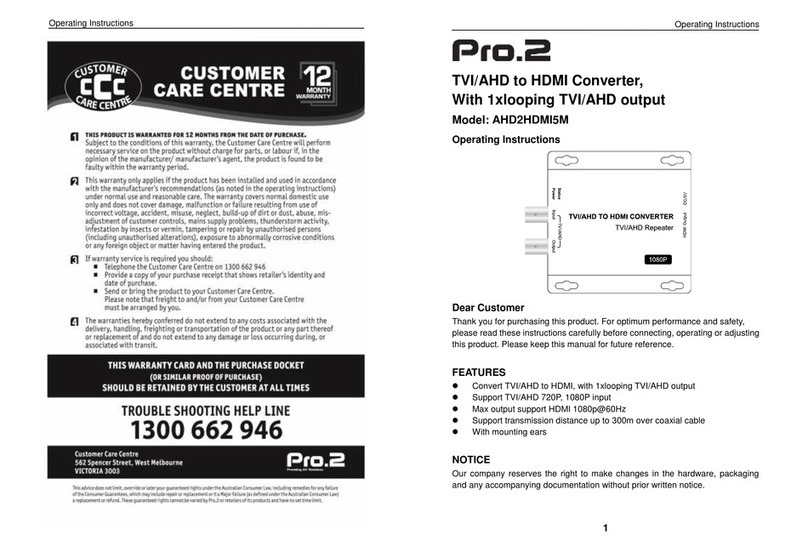
Pro2
Pro2 AHD2HDMI5M operating instructions

A-Neuvideo
A-Neuvideo ANI-353 instruction manual

Baumer Hübner
Baumer Hübner POG 90 Installation and operating instructions
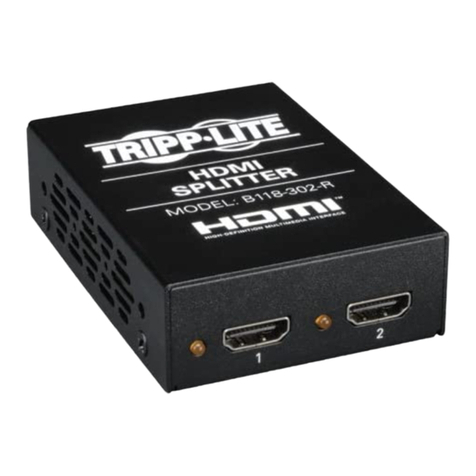
Tripp Lite
Tripp Lite B118-302-R owner's manual
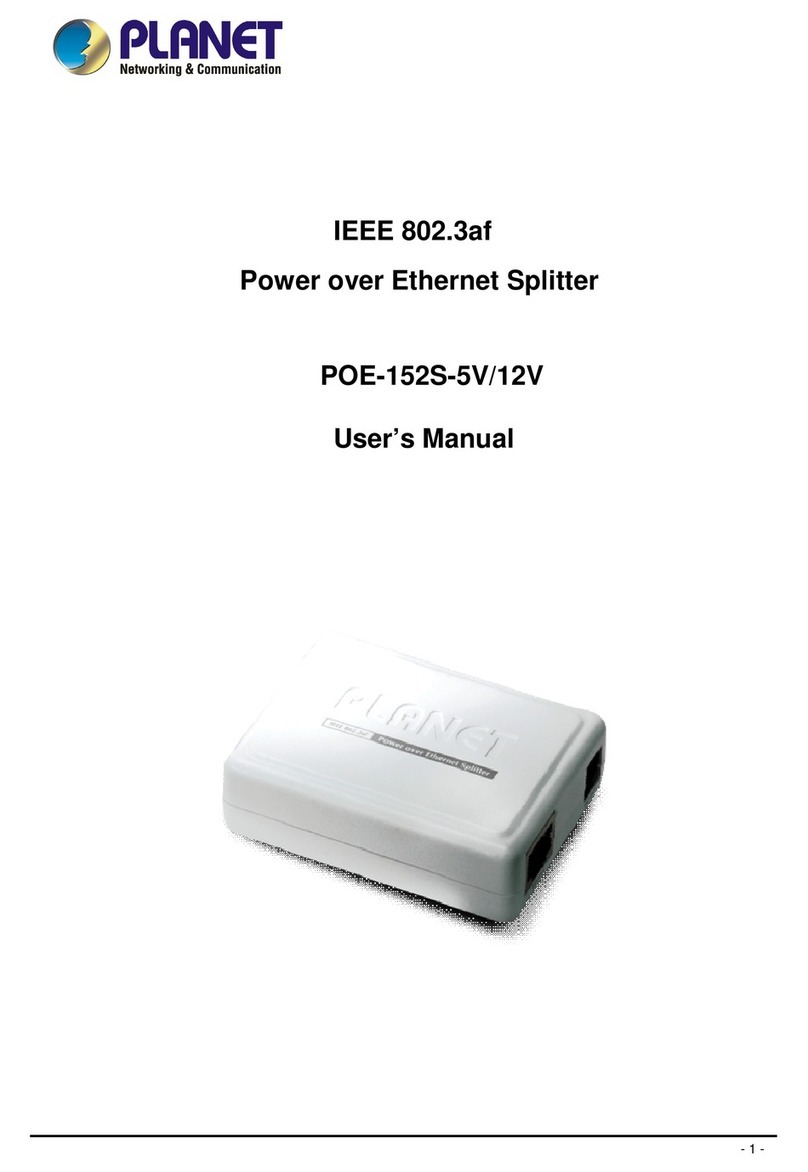
Planet
Planet Power over Ethernet Splitter POE-152S-12V user manual
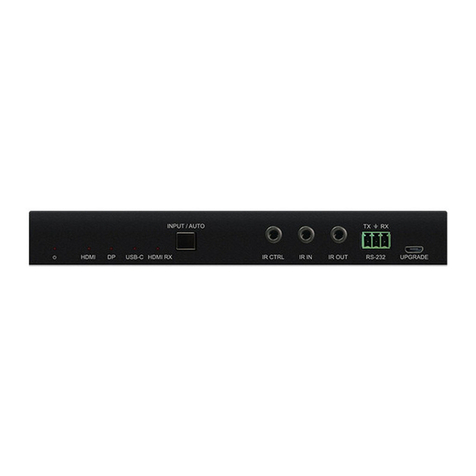
Blu Stream
Blu Stream HEX70HDU-KIT user manual

